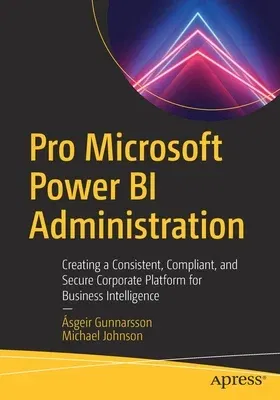Manage Power BI within organizations. This book helps you systematize
administration as Microsoft shifts Power BI from a self-service tool to
an enterprise tool. You will learn best practices for many Power BI
administrator tasks. And you will know how to manage artifacts such as
reports, users, work spaces, apps, and gateways. The book also provides
experience-based guidance on governance, licensing, and managing
capacities.
Good management includes policies and procedures that can be applied
consistently and even automatically across a broad user base. This book
provides a strategic road map for the creation and implementation of
policies and procedures that support Power BI best practices in
enterprises. Effective governance depends not only on good policies, but
also on the active and timely monitoring of adherence to those policies.
This book helps you evaluate the tools to automate and simplify the most
common administrative and monitoring tasks, freeing up administrators to
provide greater value to the organization through better user training
and awareness initiatives.
What You Will Learn
-
Recognize the roles and responsibilities of the Power BI administrator
-
Manage users and their work spaces
-
Know when to consider using Power BI Premium
-
Govern your Power BI implementation and manage Power BI tenants
-
Create an effective security strategy for Power BI in the enterprise
-
Collaborate and share consistent views of the data across all users
-
Follow a life cycle management strategy for rollout of dashboards and
reports
-
Create internal training resources backed up by accurate documentation
-
Monitor Power BI to better understand risks and compliance manage
costs, and track implementation
Who This Book Is For
IT professionals tasked with maintaining their corporate Power BI
environments, Power BI administrators and power users interested in
rolling out Power BI more widely in their organizations, and IT
governance professionals tasked with ensuring adherence to policies and
regulations


